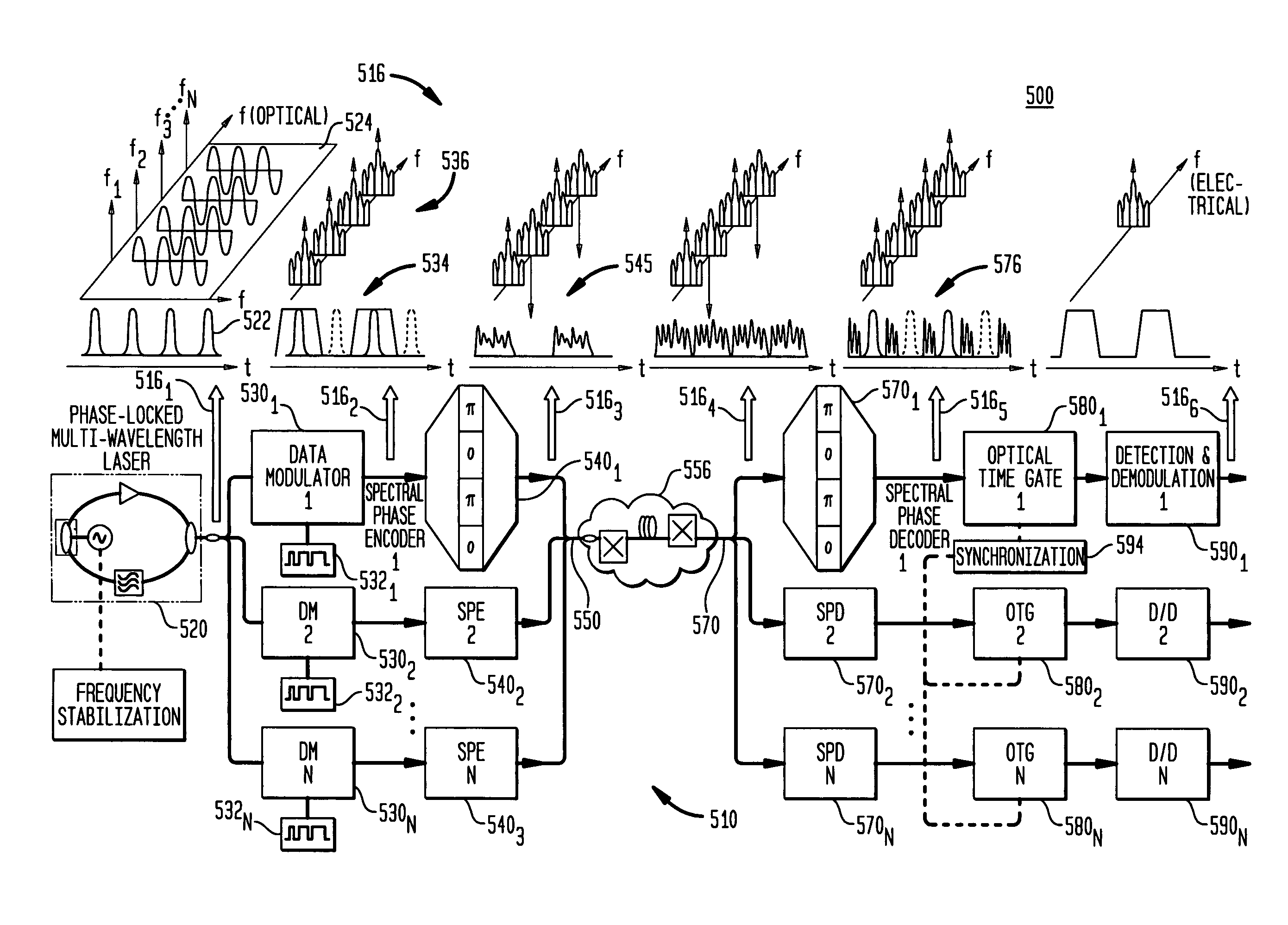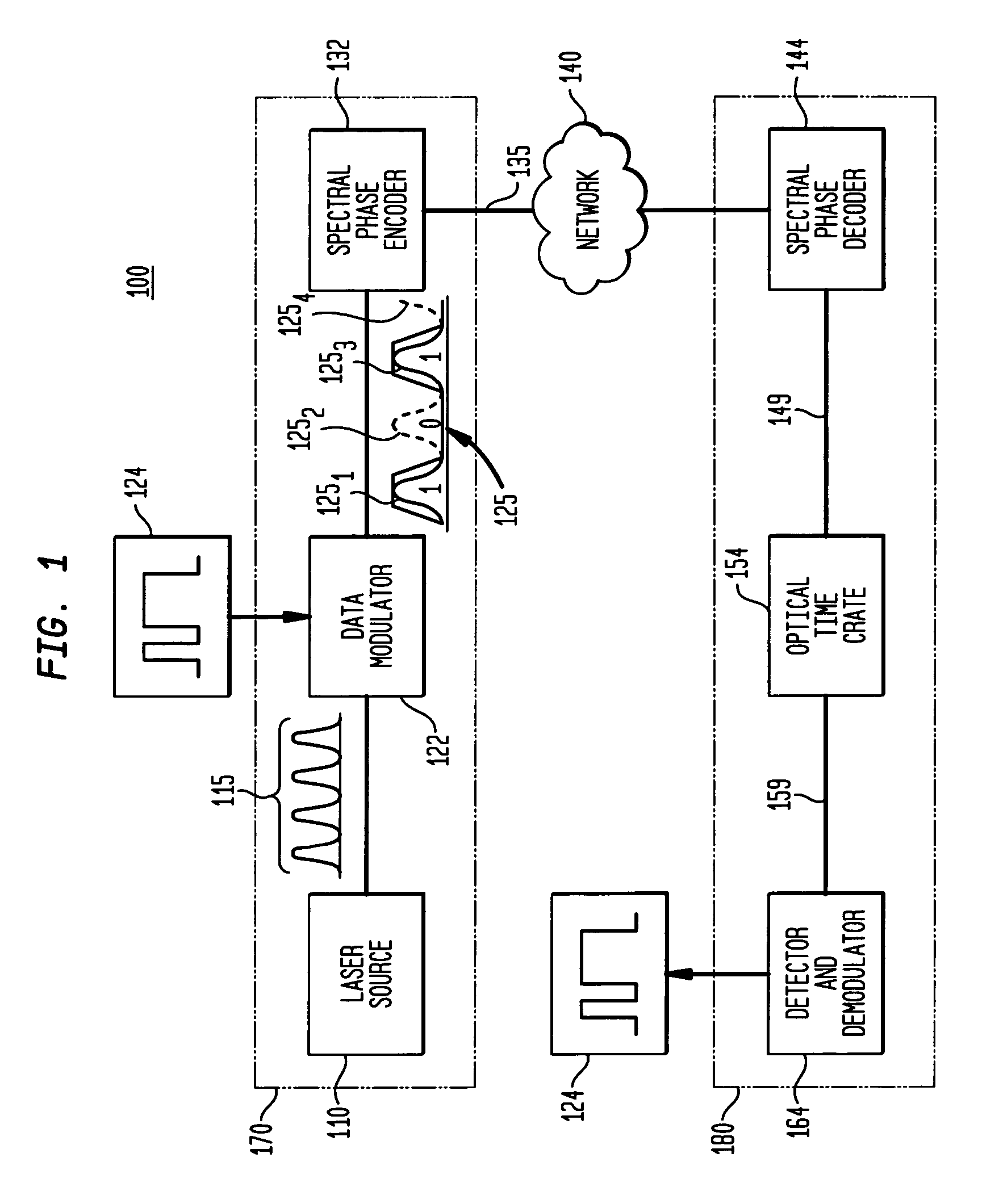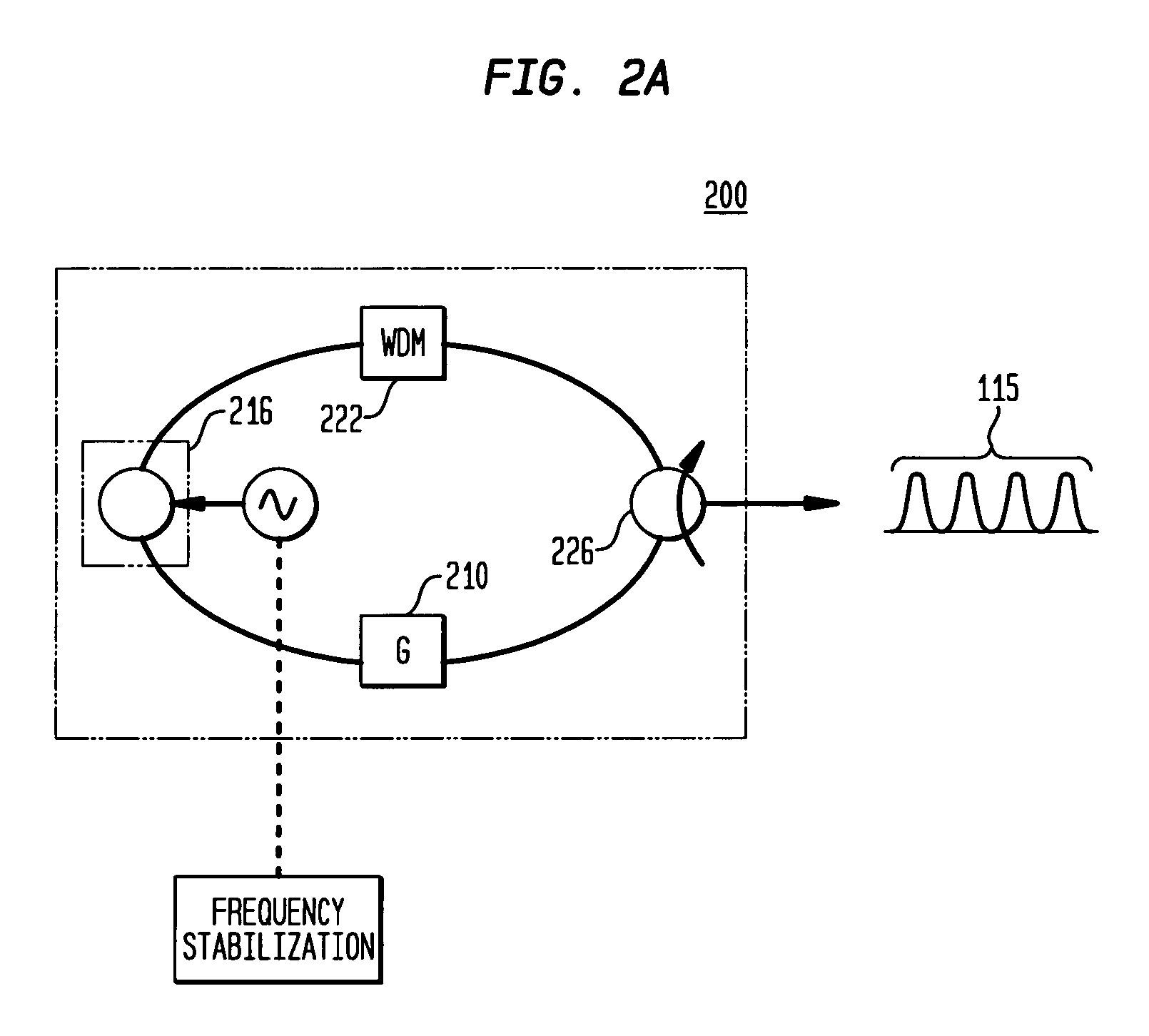Phase chip frequency-bins optical code division multiple access
a phase chip frequency and optical code technology, applied in the field of optical communication, can solve the problems of difficult for one party in a conversation to hear the other party, their conversation will drown out the other conversation, and the number of users is quite limited in fdma and tdma,
- Summary
- Abstract
- Description
- Claims
- Application Information
AI Technical Summary
Benefits of technology
Problems solved by technology
Method used
Image
Examples
Embodiment Construction
[0041]This detailed description incorporates by reference herein the disclosures of commonly assigned U.S. application Ser. No. 11 / 048,394, filed Jan. 31, 2005 and titled “Multi-Wavelength Optical CDMA With Differential Encoding And Bipolar Differential Detection.”
[0042]FIG. 1 illustratively depicts a system 100 in accordance with an aspect of the present invention. The system comprises a laser source 110 that generates a sequence of optical pulses 115 that are fed to a data modulator 120. The data modulator 122 also receives a data stream 122 that is used to modulate the sequence of optical pulses 115. The modulation data preferably comprises a digital data stream generated by a subscriber or user station 124. In a preferred embodiment, the data modulator 122 comprises an ON / OFF keyed data modulator wherein a “1” symbol or bit in the digital data stream corresponds to the presence of an optical pulse and a “0” symbol or bit corresponds to the absence of an optical pulse. In this wa...
PUM
 Login to View More
Login to View More Abstract
Description
Claims
Application Information
 Login to View More
Login to View More - R&D
- Intellectual Property
- Life Sciences
- Materials
- Tech Scout
- Unparalleled Data Quality
- Higher Quality Content
- 60% Fewer Hallucinations
Browse by: Latest US Patents, China's latest patents, Technical Efficacy Thesaurus, Application Domain, Technology Topic, Popular Technical Reports.
© 2025 PatSnap. All rights reserved.Legal|Privacy policy|Modern Slavery Act Transparency Statement|Sitemap|About US| Contact US: help@patsnap.com



